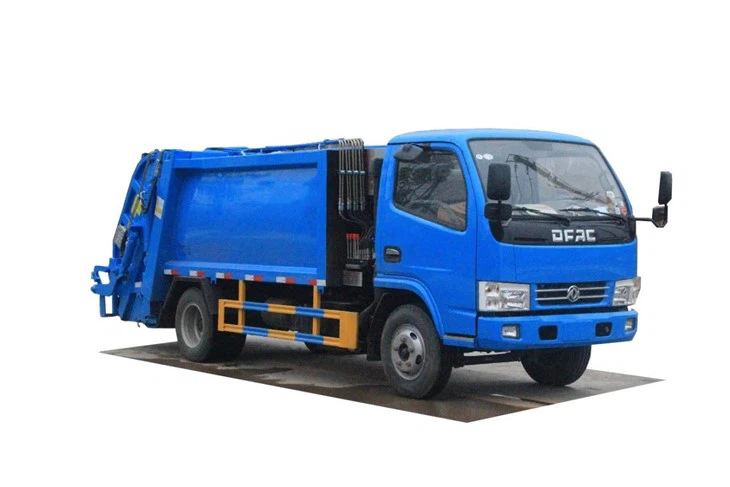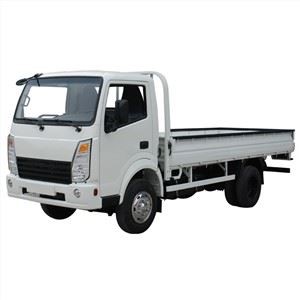Understanding the Extended Crew Cab: A Comprehensive Guide

Introduction
The extended crew cab has gained immense popularity among truck enthusiasts and families alike. This versatile vehicle blends the utility of a pickup truck with the comfort of spacious passenger seating. Whether you are using it for work, family trips, or weekend adventures, understanding the features and benefits of an extended crew cab is essential. In this article, we will delve into everything you need to know about extended crew cabs, including their design, advantages, comparisons with other types of cabs, and practical tips for choosing the right one for your needs.
What is an Extended Crew Cab?
An extended crew cab is a type of pickup truck configuration that offers additional cab space for passengers while maintaining a truck bed for cargo. Typically, an extended crew cab has four full-size doors and can comfortably seat five to six passengers, making it perfect for families or work teams. In contrast to traditional crew cabs, extended crew cabs provide extra legroom and comfort without sacrificing functionality.
The Design of an Extended Crew Cab
The design of an extended crew cab is what sets it apart from standard cabs. Here are some key aspects:
- Four Full-Size Doors: This design allows easy access to both the front and rear seats, making it convenient for passengers of all ages.
- Extended Length: The extended cab typically has a longer body than standard cabs, providing more rear legroom.
- Spacious Cabin: With thoughtful arrangements, these cabs offer generous storage compartments and options for additional amenities, such as cup holders and charging ports.
Benefits of an Extended Crew Cab
The extended crew cab configuration offers several benefits:
- Increased Passenger Capacity: Perfect for large families or work crews who need to travel together.
- Enhanced Comfort: Additional space provides more comfort for passengers during long drives.
- Versatility: The combination of passenger space and truck bed utility makes it ideal for various activities, from hauling tools to family road trips.
Comparing Extended Crew Cabs with Other Cab Styles
Regular Cab vs. Extended Crew Cab
Regular cabs, with only two doors and seating for up to three passengers, are designed primarily for work purposes. In contrast, extended crew cabs prioritize passenger space while maintaining functionality. A comparison table highlights the differences:
| Feature | Regular Cab | Extended Crew Cab |
|---|---|---|
| Passenger Capacity | 2-3 | 5-6 |
| Access to Rear Seats | No | Yes |
| Legroom | Less | More |
| Ideal Use | Work-focused | Family & Utility |
Comparison with Crew Cab
While both extended crew cabs and crew cabs offer spacious interiors, there are notable differences:
| Feature | Crew Cab | Extended Crew Cab |
|---|---|---|
| Rear Seat Space | Standard | Enhanced |
| Ideal for Families | Yes | Yes |
| Bed Length | Short or Standard | Varies |
Choosing the Right Extended Crew Cab for Your Needs
Choosing the right extended crew cab can be overwhelming. Consider the following factors:
1. Passenger Capacity
Determine how many passengers you frequently transport. Most extended crew cabs comfortably seat five to six people, but some models may have options for even more.
2. Bed Size
Evaluate your cargo needs. Extended crew cabs typically come with different bed sizes, including short, standard, and long beds. Choose a size that complements your needs.
3. Engine Options

Consider your driving style and purposes. Extended crew cabs offer various engine configurations, from fuel-efficient options to powerful V8 engines for towing and hauling.
4. Towing Capacity
If you plan to tow trailers or boats, ensure you select a model with sufficient towing capacity. Each manufacturer provides specifications for their various configurations.
5. Safety Features
Look for advanced safety features such as lane departure warnings, blind-spot monitoring, and automatic emergency braking, which enhance safety for passengers and cargo alike.
6. Fuel Efficiency
While trucks are not typically known for great fuel efficiency, some extended crew cabs offer better gas mileage than others. Assess the miles per gallon ratings that suit your budget and driving habits.
Practical Examples of Extended Crew Cab Use
1. Family Road Trips
An extended crew cab can transform family road trips into comfortable experiences. With ample legroom, technology features like USB charging ports, and the ability to bring extra luggage in the truck bed, it’s perfect for vacations.
2. Work Crew Transport
For businesses that require transporting a team, extended crew cabs are a practical solution. Workers can travel together in a spacious environment, reducing the number of vehicles required on-site.
3. Weekend Adventures
Whether you’re heading to the lake for fishing or planning a camping trip, the versatility of an extended crew cab fits all your gear and passengers comfortably.
4. Everyday Use
With spacious back seats, an extended crew cab is an excellent daily driver option for families that need room for kids, friends, or pets.
Top Extended Crew Cab Models in 2023
If you’re considering purchasing an extended crew cab, here are some top models you should review:
- Ford F-150: Known for its reliability and versatility, the F-150 offers various configurations and powerful engine options.
- Chevrolet Silverado 1500: This truck combines rugged performance with comfort, making it a family favorite.
- Dodge Ram 1500: The Ram 1500 stands out for its innovative storage solutions and smooth ride quality.
- GMC Sierra 1500: This is a premium truck that offers luxury feel alongside practicality.
- Toyota Tundra: Trusted for its durability, the Tundra also provides impressive cabin features and safety ratings.
Maintaining Your Extended Crew Cab
Proper maintenance will extend the life of your extended crew cab. Here are some tips:
1. Regular Oil Changes
Follow the manufacturer’s recommendations for oil change intervals, usually every 5,000 to 7,500 miles.
2. Tire Maintenance

Check tire pressure regularly and rotate your tires to enhance their lifespan and performance.
3. Brake Inspection

Brakes are vital for safety. Have them inspected at least once a year or if you notice any unusual sounds.
4. Interior Care
Vacuum and clean the interior routinely to prevent wear and tear, especially if you carry children or pets frequently.
FAQ Section
1. What is the difference between an extended crew cab and a regular crew cab?
An extended crew cab offers more rear legroom and comfort compared to a regular crew cab, which aims for a standard passenger experience. The former is ideal for larger families or groups.
2. Can extended crew cabs tow trailers?
Yes, most extended crew cabs have a substantial towing capacity, but it’s crucial to check the manufacturer’s towing specifications before planning to tow.
3. Are extended crew cabs fuel-efficient compared to standard trucks?
Extended crew cabs may not be as fuel-efficient as smaller cars, but many modern models offer competitive fuel economy for a truck.
4. How many people can fit in an extended crew cab?
Most extended crew cabs can comfortably seat five to six passengers. Some configurations may allow for additional seating.
5. What are the best uses for an extended crew cab?
Extended crew cabs are ideal for families, work crews, road trips, and everyday driving, offering both comfort and utility.
6. How much does an extended crew cab cost?
The cost of an extended crew cab varies widely based on the brand, model, and features, typically ranging from $30,000 to over $50,000.
